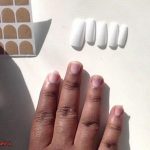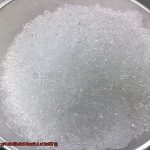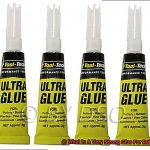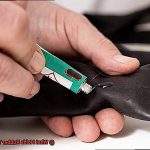When it comes to fixing and bonding materials in a flash, super glue has always been the hero of the hour. But what happens when you need an alternative adhesive? Whether it’s because of personal preference, specific project requirements, or material compatibility, fear not.
This blog post is here to unveil a treasure trove of effective substitutes for super glue. Each one comes with its own unique advantages and perfect applications.
So let’s dive in and explore the world of adhesive alternatives.
Epoxy Resin: The Versatile Bonding Dynamo
Contents
- 0.1 Epoxy Resin: The Versatile Bonding Dynamo
- 0.2 Cyanoacrylate Gel: Filling Gaps with Precision
- 0.3 Double-sided Tape: A Temporary Yet Trustworthy Companion
- 0.4 Hot Glue: Quick and Strong Bonding Power
- 1 What is Super Glue?
- 2 Advantages and Disadvantages of Super Glue
- 3 Alternatives to Super Glue
- 4 Epoxy Adhesive
- 5 Polyurethane Adhesive
- 6 Water-Based Adhesives
- 7 Mechanical Fasteners
- 8 Specialty Adhesives
Looking for exceptional strength and versatility? Enter epoxy resin. This adhesive powerhouse consists of two components that must be mixed together before use, ensuring a bond that can withstand even the toughest challenges. Perfect for complex projects involving various materials, epoxy can fill gaps like nobody’s business and laugh in the face of high temperatures. Just be prepared to exercise some patience as it cures.
Cyanoacrylate Gel: Filling Gaps with Precision
Sometimes, regular super glue just doesn’t cut it when it comes to filling those pesky gaps. That’s where cyanoacrylate gel swoops in to save the day. With its higher viscosity, this gel form ensures better gap-filling capabilities than your average adhesive. Ideal for vertical applications or situations requiring precise control, cyanoacrylate gel is a force to be reckoned with. Just keep in mind that it may take longer to cure and could get a bit messy if you’re not careful.
Double-sided Tape: A Temporary Yet Trustworthy Companion
Delicate surfaces or lightweight materials calling for a temporary fix? Look no further than double-sided tape. This reliable adhesive option allows for easy repositioning and removal without leaving any sticky residue or causing damage. Whether you’re mounting artwork, securing fabric, or temporarily attaching items, double-sided tape offers convenience and versatility without the need for drying time.
Hot Glue: Quick and Strong Bonding Power
When speed is of the essence, hot glue comes to the rescue. With its rapid setup and cooling time, hot glue guns provide a quick and strong bond suitable for various materials like wood, plastic, and fabric. Perfect for arts and crafts projects or temporary fixes, hot glue is a handy replacement for super glue. Just remember that it tends to have a bulkier appearance and isn’t
What is Super Glue?
In the world of adhesives, one product stands out for its exceptional strength and versatility – Super Glue. Whether you’re a DIY enthusiast or a professional in need of a reliable bonding solution, Super Glue has got you covered. In this blog post, we will explore what Super Glue is and its outstanding features that make it the go-to adhesive for various applications.
The Discovery and Development:
Super Glue’s origins can be traced back to the 1940s when Dr. Harry Coover accidentally stumbled upon its powerful adhesive properties while working on a different project. Recognizing its potential, Dr. Coover further refined and patented the product as Super Glue in the 1950s. Since then, it has become a staple adhesive in many households and industries.
Rapid Bonding Abilities:
Super Glue is renowned for its ability to bond quickly. Within seconds of application, it forms an almost instant bond that allows for immediate use or further assembly. This makes it ideal for situations where time is of the essence or when precise alignment is required.
Versatility:
Super Glue is effective on a wide range of materials, including plastics, rubber, ceramics, wood, metal, and even some fabrics. It can be used to repair broken items, bond small parts together, seal cracks or gaps, or even create intricate models or crafts. Its versatility makes it a reliable choice for various projects.
Strength and Durability:
When it comes to strength, Super Glue doesn’t disappoint. Its cyanoacrylate composition creates a strong and durable bond that withstands everyday wear and tear. Once cured, the bond is resistant to moisture, heat, and chemicals, making it suitable for both indoor and outdoor applications.
Seamless Finish:
Super Glue dries transparently, ensuring a virtually invisible bond. This feature provides a clean and seamless finish, making it perfect for projects where aesthetics matter. Whether you’re repairing a broken vase or crafting a delicate piece of jewelry, Super Glue ensures that your work shines without any unsightly residue.
Viscosity Options:
Super Glue is available in various viscosities, allowing users to choose the consistency that best suits their specific needs. From thin formulas for precise applications to thicker versions for filling gaps, there is a Super Glue variant for every project requirement.
Advantages and Disadvantages of Super Glue
Super Glue, the superhero of adhesives, has captured the hearts of many with its remarkable bonding capabilities and rapid drying time. Nonetheless, like any product, it presents both advantages and disadvantages. In this article, we will delve into the pros and cons of Super Glue, equipping you with the knowledge to make an informed decision when selecting an adhesive for your upcoming project.
Advantages of Super Glue:
Unyielding Bonding Power:
Super Glue is renowned for its ability to forge strong and durable connections between a wide array of materials – be it plastic, metal, wood, or ceramics. No matter the load or strain, Super Glue ensures a reliable solution for repairing broken objects or bonding intricate components together.
Lightning-Fast Drying Time:
Unlike traditional adhesives that may demand hours or even days to cure, Super Glue astonishes with its astonishingly swift drying process. Within mere seconds, your repairs are complete, enabling you to tackle urgent fixes or meet tight project deadlines.
Versatility at its Finest:
Super Glue’s versatility makes it a favorite choice among DIY enthusiasts and professionals alike. From fixing everyday household items to embarking on creative crafting ventures, this adhesive caters to a broad range of applications. Its compatibility with various materials further solidifies its status as a go-to adhesive.
User-Friendly Application:
Conveniently housed in compact tubes or bottles equipped with precision applicators, Super Glue offers ease of use for individuals of all skill levels. Its liquid consistency ensures seamless application and precise bonding. Whether you are a novice or seasoned user, Super Glue guarantees hassle-free utilization.
Disadvantages of Super Glue:
Inflexible by Nature:
Once cured, Super Glue solidifies into a rigid and brittle state, lacking the flexibility required for objects or materials that necessitate movement. Consequently, it may not be the optimal adhesive choice for rubber or fabric bonding.
Limited Gap-Filling Capabilities:
Super Glue thrives when faced with a snug fit between the surfaces to be bonded. However, its gap-filling abilities are limited, resulting in a weaker bond when confronted with uneven surfaces or gaps.
Health Hazards:
Super Glue comprises chemicals that can pose potential health risks if ingested or come into contact with skin or eyes. Prioritizing safety precautions and handling Super Glue with care is vital to avoid any possible harm.
Selective Material Compatibility:
Despite its prowess in bonding an assortment of materials, Super Glue may struggle to adhere effectively to oily, greasy, or low surface energy surfaces. Ensuring compatibility between the adhesive and the material being bonded is crucial for successful results.
Alternatives to Super Glue
Look no further. In this article, we’ll explore some fantastic alternatives to Super Glue that will have you sticking things together like a pro. Whether you’re working on a DIY project or need a quick fix, these alternatives offer their own unique advantages and disadvantages.
- Epoxy Adhesive: This powerhouse adhesive consists of two parts – a resin and a hardener – that, when mixed together, create a strong and durable bond. Epoxy adhesive is known for its resistance to heat, water, and chemicals, making it ideal for heavy-duty applications. Need to repair a broken mug handle or fix a leaking pipe? Epoxy adhesive has got you covered.
- Cyanoacrylate Adhesive: Also known as “crazy glue” or “instant glue,” this adhesive bonds quickly and securely to various materials like metal, plastic, and wood. It’s resistant to water and most chemicals but may not be suitable for flexible materials or surfaces under constant stress. So, if you’re looking to repair a broken toy or mend a piece of jewelry, cyanoacrylate adhesive is your go-to choice.
- Adhesive Tapes: For easy application and mess-free bonding, adhesive tapes like double-sided or foam tapes are perfect. They provide a reliable bond between surfaces and can be cut to size as needed. Plus, they leave no residue behind when removed. From hanging up posters without damaging the walls to mounting lightweight objects, adhesive tapes are versatile and convenient.
- Welding or Soldering: These methods are excellent alternatives for certain materials, especially in metalworking. Welding involves melting the base material and adding filler material for a robust bond, while soldering uses a solder alloy for joining metal surfaces together permanently. When it comes to heavy-duty repairs or constructing metal structures, welding or soldering is the way to go.
- Natural Alternatives: If you prefer a more eco-friendly option, try gelatin-based adhesives made by dissolving gelatin in hot water. They’re great for minor household repairs and crafts. Wheat paste, made by mixing flour with water and heating until thickened, is another natural alternative commonly used in paper-based crafts. So, whether you’re fixing a torn book page or creating a homemade card, these natural alternatives offer a sustainable solution.

Epoxy Adhesive
Epoxy adhesive: the ultimate bonding solution that can handle any project with ease. This versatile two-part adhesive is a game-changer, offering long-lasting strength and a multitude of applications. So, why choose epoxy adhesive over super glue? Let’s explore the reasons why this adhesive is in a league of its own.
First and foremost, epoxy adhesive is the superhero of glues when it comes to versatility. It can bond a wide range of materials, from metal and plastic to wood, glass, and ceramics. Whether you’re repairing your favorite coffee mug or crafting your own unique masterpiece, epoxy adhesive is the go-to glue for all your projects.
But versatility isn’t the only superpower epoxy adhesive possesses. It brings incredible strength to the table, surpassing that of super glue. No matter the load or vibrations, you can trust epoxy adhesive to hold up under pressure. Need to repair a metal component or fix a broken item? Look no further than epoxy adhesive for a bond that will stand the test of time.
Durability is another key feature of epoxy adhesive. It’s tough as nails, resisting chemicals, water, and heat effortlessly. Rain or shine, indoors or outdoors, you can count on epoxy adhesive to withstand the harshest conditions without compromising its bond. Prepare yourself for even the toughest challenges.
Before embarking on your next bonding adventure, remember to follow the instructions carefully. Thoroughly mix the resin and hardener, apply within the specified working time, and ensure your surfaces are clean and dry. Attention to detail will unlock the full potential of epoxy adhesive and allow you to achieve remarkable results.
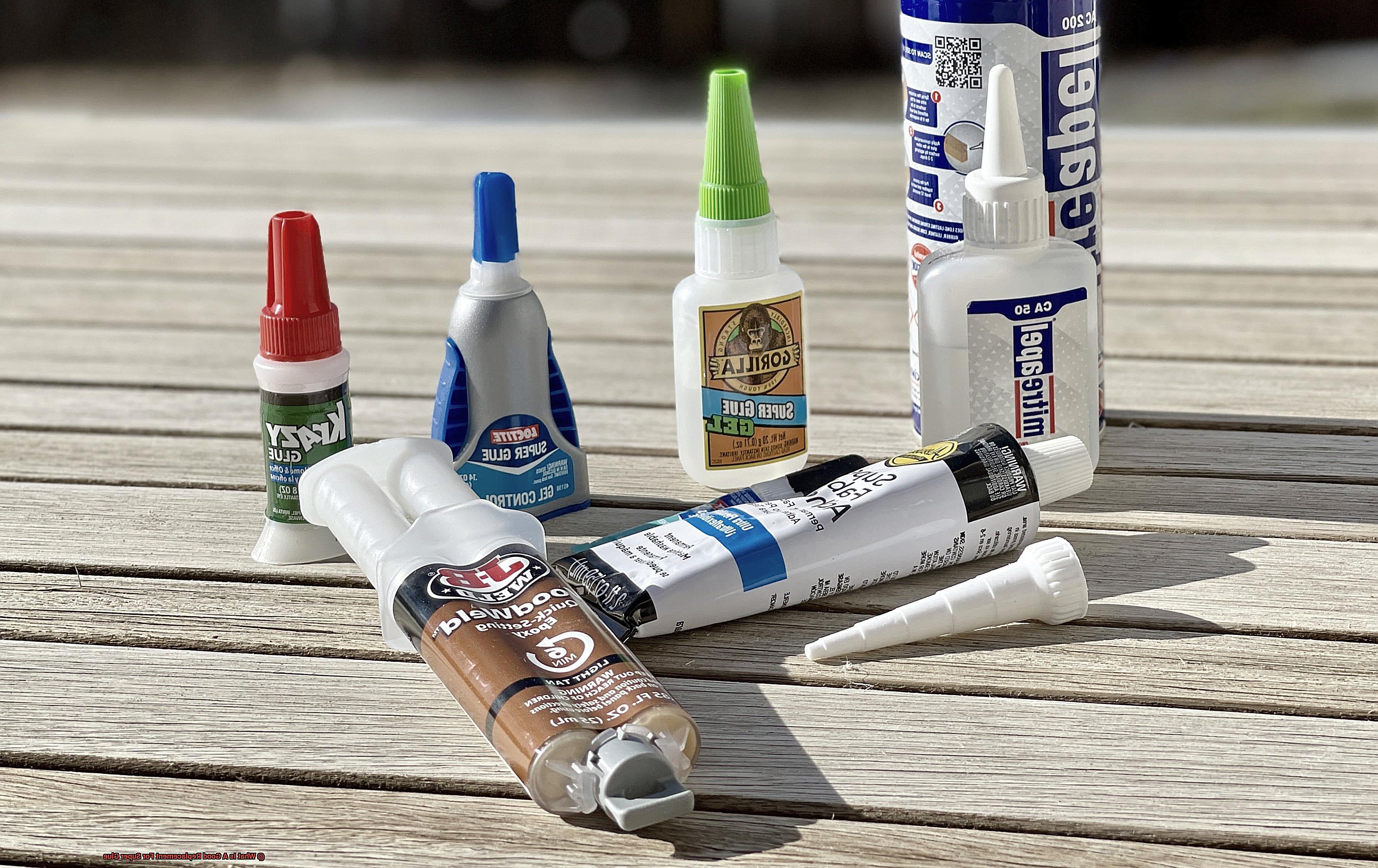
Polyurethane Adhesive
Today, we dive into the fascinating world of polyurethane adhesive, a superhero in its own right. Whether you’re a DIY enthusiast, a professional craftsman, or simply someone who appreciates the power of glue, read on to discover why polyurethane adhesive might just be the ultimate replacement for your trusty super glue.
Advantages of Polyurethane Adhesive:
Bonding Versatility:
Polyurethane adhesive is a true multi-tasker, excelling at bonding different materials together. It effortlessly joins wood, metal, plastic, concrete, and more. With this adhesive by your side, you can tackle projects that involve joining materials with different properties, expanding your creative possibilities.
Resilience against the Elements:
Polyurethane adhesive laughs in the face of moisture, heat, and chemicals. When applied correctly, it forms a waterproof seal, making it ideal for outdoor applications or projects where exposure to moisture is expected. Additionally, its resistance to extreme temperatures and chemicals ensures that your bond remains strong in any environment.
Flexibility and Durability:
Polyurethane adhesive understands the importance of adaptability. Once cured, it retains its pliability and can withstand movements and vibrations without sacrificing bond strength. This flexibility makes it an excellent choice for applications that require some degree of movement or flexibility, ensuring that your bond stays intact over time.
Disadvantages of Polyurethane Adhesive:
Longer Curing Time:
Patience is key when working with polyurethane adhesive. Unlike super glue’s instant bond, polyurethane adhesive typically takes several hours or even overnight to fully cure and reach its maximum strength. If you’re in a hurry or need quick repairs, this longer curing time may not be ideal. However, the wait is worth it for the strong and durable bond it provides.
Potential Messiness:
Polyurethane adhesive’s expanding foam-like nature can lead to a messy bonding process. Excess adhesive may squeeze out during application, requiring careful handling and prompt cleanup. However, with a little extra care and attention, this minor inconvenience can be easily managed, ensuring a neat and professional finish to your project.
Water-Based Adhesives
Adhesives are the unsung heroes of our everyday lives, holding things together and making repairs possible. When it comes to choosing the right adhesive, water-based adhesives stand out as a versatile and reliable option. In this article, we will delve into the world of water-based adhesives, exploring their benefits, applications, and why they are preferred over alternatives like super glue.
Versatility: Bonds That Hold Strong
Water-based adhesives are known for their ability to bond a wide range of materials. Whether you’re working with paper, fabric, wood, ceramics, or even some plastics, these adhesives have got you covered. Craft projects, woodworking endeavors, and household repairs all benefit from their versatility. Unlike super glue, which is limited in its bonding capabilities, water-based adhesives offer a broader scope of application possibilities.
Ease of Use: Precision and Adjustability
Unlike super glue, which dries quickly and leaves little room for adjustments, water-based adhesives provide a longer open time. This means that you can reposition or adjust the bonded surfaces before the adhesive fully sets. This feature is especially valuable for complex projects that require precise alignment or bonding large surfaces. With water-based adhesives, you have the flexibility to make adjustments without compromising the strength of the bond.
Safety First: Non-Toxic and Low VOCs
When it comes to safety, water-based adhesives take the lead. These adhesives are non-toxic and have lower levels of Volatile Organic Compounds (VOCs) compared to solvent-based options. Unlike super glue, water-based adhesives do not emit strong fumes or odors that can be harmful to your health. They are also less likely to cause skin irritation or allergic reactions. This makes them a safe choice for use in enclosed spaces and for individuals with sensitivities to certain chemicals.
Reliable Bonds: Strength That Lasts
While super glue is renowned for its instant bonding power, water-based adhesives can also provide reliable and durable bonds. Once fully cured, they can withstand various stresses and strains, making them suitable for a wide range of applications. The specific strength of the bond will depend on factors such as the materials being bonded and the application method. However, rest assured that water-based adhesives offer a reliable solution for your bonding needs.
The Perfect Match: Water-Based Adhesives in Specific Situations
Water-based adhesives excel in certain situations where their unique properties are highly valued. For projects that require repositioning or adjusting, such as crafts or woodworking endeavors, water-based adhesives offer the flexibility needed for success. Additionally, environments where safety and environmental concerns are a priority, such as schools, homes, or workplaces with strict regulations, benefit from the use of water-based adhesives.
Mechanical Fasteners
When it comes to joining two objects together, mechanical fasteners are the go-to choice for many industries. Unlike adhesives like super glue, mechanical fasteners rely on physical forces to create a strong and reliable bond. Let’s explore the different types of mechanical fasteners, their characteristics, and applications.
One of the most common types of mechanical fasteners is the screw. Screws come in various sizes and types, such as wood screws, machine screws, and self-tapping screws. They can be tightened or loosened using a screwdriver or wrench, providing a secure connection in applications ranging from furniture assembly to automotive manufacturing.
Bolts, larger in size compared to screws, are typically used with nuts to create a secure connection. With their strength and durability, bolts find their applications in structural projects where safety is paramount.
For quick and efficient installation in construction and woodworking projects, nails are the pointed fasteners of choice. Their ability to penetrate materials like wood makes them indispensable in these industries.
In aerospace and automotive industries, rivets offer a permanent bonding solution by deforming the material being joined. These sturdy fasteners provide a strong bond that can withstand extreme conditions and vibrations.
Staples, those thin metal fasteners driven into materials using a stapler, provide a quick and convenient way to join materials together. They are commonly used in upholstery, packaging, and office supplies.
The choice of mechanical fastener depends on various factors such as the materials being joined, load requirements, and environmental conditions. Mechanical fasteners made from strong and durable materials like metal or plastic ensure longevity and reliability.
Unlike adhesives like super glue, mechanical fasteners provide a reversible connection that can be easily disassembled if needed. This advantage makes them an ideal choice when frequent disassembly or adjustments are required.
Specialty Adhesives
In the world of bonding materials, sometimes a standard adhesive just won’t cut it. That’s where specialty adhesives swoop in as the unsung heroes. These remarkable adhesives are meticulously formulated to cater to unique applications and materials, delivering unparalleled bonding strength and resilience. Prepare to be captivated by the captivating realm of specialty adhesives as we delve into their diverse types and specific uses.
Epoxy Glue: The Unyielding Bond
First in line is the mighty epoxy glue, renowned for its extraordinary bonding strength and unwavering resilience against heat, chemicals, and moisture. By expertly blending two potent components – resin and hardener – epoxy glue forges an unbeatable bond that works wonders on materials like metal, plastic, glass, and ceramics. This adhesive is the go-to choice for repairing broken objects or uniting dissimilar materials.
Polyurethane Glue: The Versatile Wonder
For those seeking flexibility and water resistance as their ultimate allies, look no further than polyurethane glue. This adhesive exhibits a remarkable ability to expand as it cures, effectively filling gaps and creating an unbreakable bond. Its versatility shines through in woodworking projects or outdoor applications, making it suitable for surfaces such as wood, metal, concrete, and plastics.
Cyanoacrylate Glue: The Instant Savior
Often hailed as the “instant glue” or “CA glue,” cyanoacrylate glue emerges as a formidable alternative to super glue. Within mere seconds of encountering moisture, this adhesive forms an indomitable bond. While it effortlessly conquers rubber, plastic, metal, and even skin, caution should be exercised due to potential skin irritation.
Tailored Solutions for Specific Needs
Beyond these crowd favorites lie an array of specialty adhesives designed exclusively for unique materials or applications. Whether you’re seeking to bond fabric, foam, leather, or even embark on underwater endeavors, rest assured that there exists a specialty adhesive tailored precisely to meet your needs. These adhesives boast distinctive properties that make them the ideal choice for their intended tasks.
8g2REE6z9V8″ >


